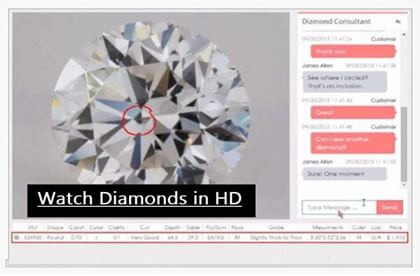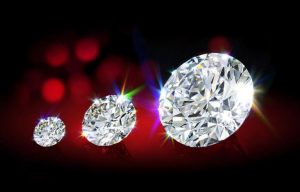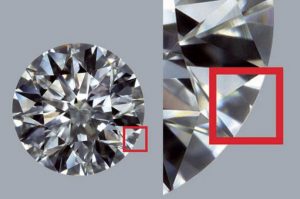Executive Summary
There are a lot of labs grading diamonds today. Some have proven trustworthy and consistent over the years. While some others have not. The review of some common grading labs are as follows;
GIA Laboratory: They are the most common, renowned and trusted grading laboratory in the diamond industry. Most of the standards with which we evaluate our diamonds today were set by them and their consistency over the years stands them out. There are about 19 criteria that the GIA uses to evaluate a diamond including the culet size, girdle, polish, symmetry, among others.
AGS Laboratory: The diamond cut was first graded on a scale of 0-9 and the laboratory that first graded a diamond’s cut is the AGS. They had the monopoly of the market on the diamond cut grade until the GIA grading system came along. They are, however, a highly reputable and trustworthy institution with years of consistency.
CGAL Laboratory: This laboratory grades a diamond based on the diamond’s finish, clarity, color, and carat. This describes the quality of the cut and other general characteristics. A CGAL report contains information on the carat weight, clarity, color, cut, polish, symmetry, and proportion of the diamond.
IGI: They are known to grade a significant number of polished diamonds that are present in the market, as well as grading synthetic diamonds on a large commercial scale. They however have a poor grading standard for the color and clarity of diamonds. They also have not built a reputation for being trustworthy, so they are not recommended.
GSI: The youngest grading lab but they also have the poorest standard compared to the others. Their standards are even worse than the IGI. They are also not recommended.
EGL: They have a poor reputation, as they are known for inflating their diamond quality claims. They are not trustworthy and not recommended. You will only end up buying an inferior diamond at an excessive price.
Every diamond that you purchase should have a lab certification. This is one of the numerous things that a buyer has to check and review before purchasing a diamond. A diamond certificate is usually issued by a body of graders. It usually contains different elements of the diamond-like the cut parameters of the diamond, its color, clarity, fluorescence, etc. It is usually an easy way for the buyer to know the quality of the diamond that they are buying.
Different bodies are involved in grading diamonds. Bodies like GIA, AGS, CGAL, IGI, GSI, etc. All of these bodies are third party bodies and they all have professionally trained graders that make use of professional tools to evaluate all the characteristics of a diamond in the lab.
These different bodies have different ways of grading diamonds so their evaluation of the same diamonds might be different. The difference in their evaluation might even be very significant sometimes. It becomes very imperative for a buyer to know which diamond grader is more reliable and trustworthy and which ones to avoid.
A diamond buyer must make sure that the diamond they are pursuing is certified by a well-reputed body and they must also check and review the diamond well to be sure of what they are buying. If you are not sure how to review a diamond, you can get help from an expert. If you’re not sure what diamond grade to trust, this article provides a brief review of the common diamond grading bodies to help you with that.
GIA Certification
The GIA (Gemology Institute of America) is the most common grading body in the industry. They are unarguably the most renowned, most respected and most trusted diamond grading body. The level of consistency that they have shown over the years marks them out as the best diamond grading body in the world.
There are a number of criteria with which the GIA uses to evaluate the quality of a diamond. The criteria are as follow:
- Diamond’s evaluation date
- The cut and shape of the diamond
- Table
- Culet size
- Depth
- Symmetry
- Girdle thickness
- Polish grade
- Proportion diagram
- Cut grade (Excellent, Very Good, Good, Fair And Poor)
- Color grade (which ranges from grade D to grade J)
- Clarity grade (IF, VVS1, VVS2, VS1, VS2, SI1, SI2, etc.)
- The diamond plot that shows all the blemishes and inclusions in the diamond
- Carat weight
- Measurements (in mm)
- Fluorescence grade
- Security features
- Laser inscription (if possible)
- General comments
The most subjective of diamond scales is the color and clarity grade scales. GIA is reputed for being very rigorous with the rating of these scales.
The rich history of this organization and the number of years of proven consistency have built for them a massive reputation as the best and the most trusted diamond lab in the world. We highly recommend that you buy diamonds that are certified by the GIA.
AGS Certification
The AGS (American Gem Society) has a history for being the first lab to start the grading of a diamond’s cut. Their cut grade includes a scale from 0 – 9 which measures the different levels of the diamond cut. The most ideal cut is the one graded 0 and the least ideal cut is graded 9. This diamond cut grade has been in existence long before the introduction of the commonly used cut grade by the GIA.
AGS was known as the best graders of the cut of a diamond at a time. They had the monopoly of the ideal cut in the market. Until the introduction of a different grading system by the GIA, it was impossible for a diamond cut to be referred to as ideal without a certificate from the AGS stating that diamond as ideal. They were that influential in the market. With the introduction of the GIA, their influence reduced but they still retained their credibility to date. AGS is still the first choice for many diamond retailers that sell perfect round cut diamonds.
As a buyer, one thing that you must watch against is what is called “upgrade shopping”. This is usually done most times by manipulative sellers to maximize their profit. This is usually caused by a lack of objectivity of scales like color grade and clarity grade. If a diamond doesn’t have a clearly defined color or clarity grade, for instance, the diamond is somewhere between a strong J color and a weak I color and isn’t clearly defined. If GIA places the diamond under grade J, the sellers may decide to send it again to AGS and they might be lucky that AGS places it under I. The diamond is then sold at a higher price with the AGS certificate of I. Different labs evaluate differently, so their results might be different occasionally. It doesn’t make them a bad lab. This difference is what many sellers seek to exploit with upgrade shopping to get more money from the buyer.
One way to identify upgrade shopping is this if a seller has 30 cushion diamonds and 29 of them are GIA certified but 1 is AGS certified, that is likely the one that is upgrade shopped.
Generally speaking, AGS is another highly reputable body. They have been consistent over the years and are known to be trustworthy. We highly recommend diamonds that are certified by the AGS.
CGAL Certification
In evaluating a diamond, experts from the CGAL team make use of their equipment to check and describe the quality of a diamond’s cut and the general characteristics of the diamond.
The grade a diamond based on the diamond’s finish, clarity, color, and carat.
Diamond finish: This refers to different factors of a diamond’s cut such as polish, proportions, and symmetry. The precision of a diamond cut and the quality of its polish is used to evaluate the symmetry and polish of a diamond. The proportion of the diamond is evaluated based on the execution of the cut design with factors like table diameter, pavilion depth, crown height, crown height, culet size, and girdle thickness. All of these parameters put together are used to grade a diamond’s finish and they are rated on a scale from poor to excellent.
Diamond clarity: They check a diamond under a 10x magnification loupe to determine the clarity of the diamond. The clarity scale ranges from internally flawless (if) to heavily included i3. The characteristics of the diamond are plotted on the diamond diagram.
Diamond color: The diamond color scale ranges from colorless D to yellow Z. a diamond’s color is gotten by comparing it to a master stone with a predetermined color in the lab. They also put into consideration the amount of fluorescence the diamond has and rates it on a scale from strong to none.
Diamond carat: This is the measured weight of the diamond. Instruments that have been well-calibrated are used to determine this.
A diamond report from CGALmay contains a detailed analysis of the characteristics of the diamond. The report contains information on the carat weight, clarity, color, cut, polish, symmetry, and proportion of the diamond. It also includes a plotted diagram of the diamond.
IGI Certification
The IGI (International Gemological Institute) is based in Belgium (Antwerp). They are a very well-known diamond laboratory present in many diamond trading cities in the world and have a prevalent presence in the Asian market. They are known to grade a significant number of polished diamonds that are present in the market, as well as grading synthetic diamonds on a large commercial scale.
Although these graders are popular, they are not one that we can recommend for you. Diamonds that are certified by the IGI are not to be trusted. They have not built for themselves a reputation of being a trustworthy and reliable grader because of their poor standard of grading diamond.
They are especially poor in grading the clarity and color grades of diamonds when compared to the rating by the AGS or GIA. For example, IGI might grade the clarity of a diamond to be SI1 but when the same diamond is graded by the GIA or AGS, it might be graded as an I1diamond. The same discrepancy happens with their grading of a diamond’s color. The IGI may report that a diamond has a color grade of G but when the same diamond is evaluated by the GIA or AGS, it might turn out that the diamond has a color of I or even J. They can be that poor and lax about their grading and as a buyer, that affects you a lot. Because you will end up buying a poor quality diamond at a very high price if you follow the IGI certification. We definitely do not recommend them.
If you compare the prices of diamonds with the same or similar specifications in the diamond market, you will find out that the prices for diamonds with IGI specifications are usually much lower than those that are certified by the GIA or AGS. This is usually the strong point for manipulative retailers to get at ignorant buyers, with the point that the certificate is just a piece of paper and they can save some money. This can be tempting to an ignorant buyer. But there are other ways to save money on diamond sales without compromising on the quality of the diamond. It might appear to you that you are paying less for a good diamond but the reason you are paying that low is that the diamond has an inferior quality. As a matter of fact, that low price is still too expensive for a diamond of such quality. So in the end, you will be paying a low price for a low quality but you will still be overpaying for that quality.
GSI Certification
The GSI (Gemological Science International) is the youngest of these grading laboratories. It is relatively new compared to other commonly known ones. The issue with this grading entity is that they are not bringing in any innovative ideas or new technology to the industry. It is still the exact same thing that the other entities have been doing.
The most unfortunate thing is that their grading is very much poor compared to other laboratories. Their grading standards are nowhere near the standards set by the GIA and AGS. As if that is not poor enough, their standard is still lower than the IGI. The lack of consistency that they have shown with their grading in their few years of existence hasn’t done much to establish them as a reliable and trustworthy grading entity.
These poor qualities that they have shown mean that the diamonds certified by the GSI are not the ones that we can recommend for you to buy. As a matter of fact, the only grading entities that we trust enough to recommend to you are the GIA and AGS. You can always buy diamonds certified by these two bodies but other grading bodies, including GSI, have not done well enough to earn our trust and recommendation.
If you settle for diamonds certified by the GSI, you are most likely settling for a diamond of low quality irrespective of whatever the certificate says. When sellers approach you with such diamonds, they are not trying to do you any favor. It might appear like that, especially when they start to pitch the diamond to you. What they are trying to do in reality is to make money off you. So it is best to stay away from such diamonds irrespective and trust only diamonds with the GIA or AGS certification.
EGL Certification
The (European Gemological Laboratory) certification has a reputation for regularly inflating their quality claims. The prices for diamond certified by the EGL is usually very high, especially when you consider the quality of the diamond. If you go to the market for an EGL certified diamond, you might have the impression that you are buying a good diamond because of the high price that would be quoted. But the reality is that you’re being quoted a high price for a very inferior quality diamond. As a buyer, you’re losing on two fronts. You’re paying a huge sum for an inferior product. It makes them even worse than the GSI and IGI in which case you will be paying a relatively low amount for an inferior diamond (even if the low price is still too much for the diamond quality. It is at least not eating too deep into your pocket like the EGL would).
It is quite unfortunate that many buyers have fallen for this trick by the EGL and have paid huge sums for diamonds thinking that they have found a good diamond. This just shows that the EGL are very unreliable and is not to be trusted.
An example of EGL’s trickery is a 1ct diamond with a color grade of H and a clarity grade of VS1 being sold for $4,450 online. The price seems fair for a diamond of that quality. But in reality, when EGL claims that a diamond has a color grade of H, the real grade of the diamond is J or K, not H. and when they claim that a diamond has a clarity grade of VS1, in reality, the diamond is an S1 or S2 diamond. That’s how unreliable they are. So instead of buying an H VS1 diamond for $4,450 (which is fair), you will end up buying a J S1 or K S1 or J S2 or K S2 diamond for that price (which is outright exploitation). You can instead go for a GIA diamond that is two or three-color and clarity grade lower than what the EGL quotes. This way you can be sure of the quality of the diamond you are buying. And the price will be significantly cheaper for a higher quality diamond than the EGL’s. By default, a diamond certified by the EGL is a lot more expensive than its equivalent certified by the GIA
The point is the EGL is the worst of all diamond grading entity. No matter the price quoted for you, no matter how cheap they appear or actually are, NEVER buy a diamond that is certified by the EGL. If you do, you will be the one cheating yourself.
Another issue with the EGL is the high level of inconsistencies that they have shown in grading the color and clarity of diamonds especially. Two EGL laboratories may grade the same diamond and the results are given would not be the same. This shows that they do not have a defined standard or criteria for grading diamonds and it makes it more difficult to trust them or their certification as reliable. Therefore, they are NOT RECOMMENDED!
Conclusion
There are a lot of bodies that are involved in grading diamonds and each of these bodies and laboratories has their own standards. It just happens that only two of these numerous bodies stand out. The GIA and AGS are the most trusted diamond laboratories that you can trust. They have built their reputation over the years and have been consistent. This is something that all of the other laboratories lack.




